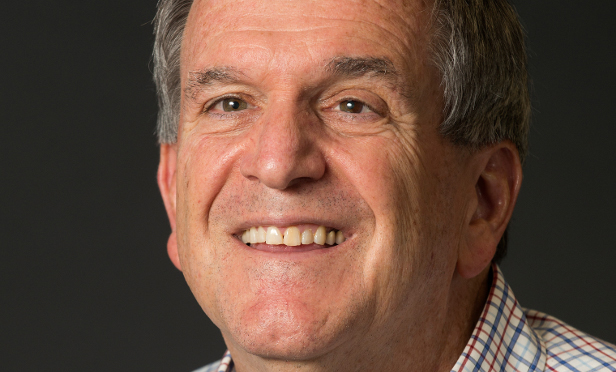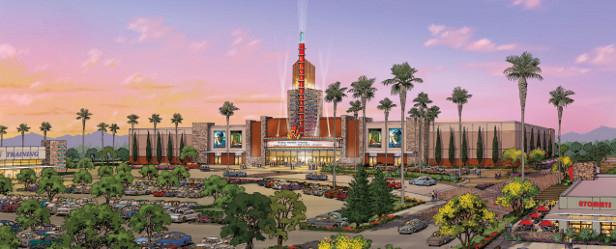 Lewis: “We have a new wave of users, especially focused on eating, drinking and creating a social experience.”
Lewis: “We have a new wave of users, especially focused on eating, drinking and creating a social experience.”
UPLAND, CA— While San Bernardino County is adding necessity retailers like grocery and drug stores, the region’s consumers are also thirsty for experiential retail and hip new restaurants, Lewis Group of Cos.’ EVP Randall Lewis tells GlobeSt.com. The firm is currently working on a variety of retail and mixed-use projects in this market—a few of considerable size. In advance of ICSC Western Conference in San Diego, we sat down with Lewis for an exclusive chat about some of their projects, retail development opportunities in the county and what’s down the road for this growing market.
GlobeSt.com: Please update us on the latest retail/mixed-use projects that you are currently pursuing.
Lewis: We’re doing a project in Rialto, CA, called Renaissance Marketplace that will be, at buildout, close to 500,000 square feet. It’s part of a mixed-use, master-planned community called Renaissance that will include residential and office uses. We have already confirmed leases with Cinemark Theatres and 24 Hour Fitness. We hope to start vertical construction in March 2017 with a grand opening before March 2018.
We are also pursuing two new interesting mixed-use projects that are located close to 4th and Haven at the intersection of Ontario, CA, and Rancho Cucamonga, CA. The two projects are Empire Lakes, a golf course redevelopment, and Piemonte. Those two communities combined will encompass 3,500 dwelling units and a lot of office since there is already good residential and daytime population We’re looking at some different kinds of retail there that may include restaurants; cool retailers like yoga studios, bike and coffee shops; and a grocery store. It will be a variety of exciting tenants.

Rialto Marketplace will be close to 500,000 square feet upon completion.
GlobeSt.com: What is the greatest opportunity in the county when it comes to new development? What trends are most important?
Lewis: For a long time San Bernardino County has been underserved in retail losing shopping dollars to other counties. For that reason, a strong trend is in increasing the sheer quantity of retail so it’s not underserved. We’ve also recognized that the region is underserved in the kind of retail that reflects the demographic changes in the County. There is clearly a desire for experiential retail and new and different kinds of restaurants and services. While there’s still a demand for very traditional retail, such as grocery and drug stores, gas stations and soft-goods retailers, we’re nowhere near saturation there, and there’s a demand for more. But with population growth, there’s also demand for different types of retail. The population has grown in Millennials and Baby Boomers. They still want services, but they’re saying, “Can you bring me different things, like a bike shop and a brew pub?” These are words we didn’t hear five years ago in San Bernardino County. We have a new wave of users, especially when it comes to eating, drinking and social preferences.
GlobeSt.com: How has population growth and job growth impacted retail success in the County?
Lewis: The Inland Empire has definitely recovered from the recession, and retailers are recognizing that now. They see there’s more spending power here, more daytime population and more niche opportunity because of the specialized categories desired by the general population as well as the ethnic population growth—primarily Hispanic and Asian.
GlobeSt.com: What new development opportunities do you see for the future?
Lewis: Quite a bit. There are more opportunities for retail that go beyond shopping. Retail can be the center of a neighborhood or community, as a placemaking element in a larger marketplace and also as part of a lifestyle component. A cool shopping center can build the identity of an area. I see that as very different from retail as a lifestyle component—a place where consumers go because the store brands understand their lifestyle and capture what they want to do.
Because of our company’s great experience in the residential sector, we see what a strategic tool retail has become in attracting and retaining new population growth. Historically, consumers asked, “Where is the most affordable house or the best school district?” While both of these still matter, we’re now hearing more and more, “What kind of retail is nearby, and is it the kind of retail I want?” Retail is more than just shopping. It’s about branding and fulfilling lifestyle opportunities. There’s still a demand for good old favorites, but there’s also interest in new uses.
GlobeSt.com: How is multifamily growth impacting retail?
Lewis: We’re seeing higher-income renters out here in many parts of San Bernardino County and these renters are bringing a lot more shopping power. As renters they don’t have as much of a cost obligation for landscaping and furniture, so they have more discretionary income. This is a big shift. While previously consumers didn’t have excess dollars for retail because they were buying a house, we find that those who do choose to rent have more available income.
GlobeSt.com: How are the wants and needs of younger generations impacting how you plan for retail?
Lewis: We have a few jobs as a retail developer. First, we have to make sure our tenants are successful. We do all we can to understand our retailers’ business and the shopping patterns and habits of their customers. Second, we focus on the customers. We know our retailers are competing with the Internet, so we’re trying to create a more interesting space. We consider the tenant mix to find tenants that are most popular with new customers and ways we can communicate with them. We’re even looking at transportation, as in how will they get to our shopping centers? Will they use cars, bikes or walk? We’re also looking at providing more shade and gathering spaces. As a landlord, you want to find ways for consumers to linger longer and go to more stores, so we’re trying to spend more time on wayfinding. This way we make it as easy as possible and as desirable as possible for people to stay longer and explore more.

















 Copyright © 2024 ALM Global, LLC. All Rights Reserved.
Copyright © 2024 ALM Global, LLC. All Rights Reserved.